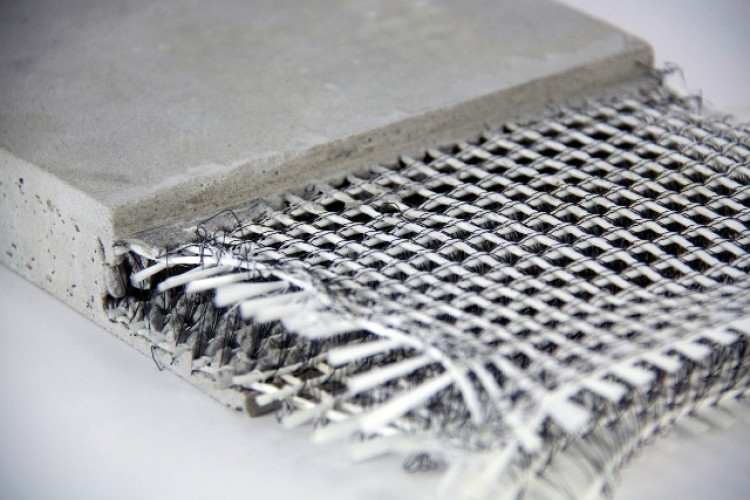The Advantages of Using Composites in Building Products
The Advantages of Using Composites in Building Products
Blog Article
Opening the Environmental Advantages of Recycled Compounds in Construction and Style
In the world of building and construction and design, the utilization of recycled composites holds substantial promise for improving sustainability methods and reducing environmental effect (composites). By including these innovative materials, there is a prospective to resolve essential problems such as waste reduction, power preservation, and a decrease in carbon footprint. The shift towards a much more lasting future in these markets depends upon opening the complete possibility of recycled compounds. This discussion will explore the multifaceted benefits and difficulties connected with incorporating recycled compounds right into building and construction and layout, supplying a glimpse into the transformative opportunities that exist in advance.

Ecological Influence Decrease
The decrease of environmental effect through using recycled compounds in building and style plays a crucial role in lasting methods. By incorporating recycled compounds right into building products, the building market can considerably decrease its carbon impact and add to an extra environment-friendly future. These sustainable products, made from repurposed plastics, wood fibers, or various other recycled aspects, offer a sensible option to traditional building and construction products without jeopardizing on top quality or longevity.
Recycled composites aid divert waste from land fills and decrease the demand for drawing out resources, therefore conserving natural deposits. Furthermore, the production process of these compounds often eats less energy and gives off less greenhouse gases compared to creating virgin materials (composites). This shift towards making use of recycled compounds not just minimizes ecological harm however additionally promotes a circular economic situation by encouraging the reuse of products that would certainly otherwise be disposed of
Waste Reduction
With a focus on lessening waste in construction and style, the assimilation of recycled composites provides a lasting remedy to decrease ecological influence. Waste reduction is an important aspect of sustainable methods, and using recycled compounds presents an opportunity to accomplish this goal effectively. By utilizing materials that have currently offered their initial purpose, such as recycled plastics or recovered timber fibers, the building and construction and design markets can dramatically reduce the quantity of waste created and sent to landfills.
Recycled composites have the possible to draw away significant quantities of waste from traditional disposal techniques, adding to a more round economy where resources are used effectively. Additionally, the manufacturing process of recycled compounds often eats much less power and generates less discharges compared to virgin materials, further reducing the ecological impact of building and style jobs.
Applying waste reduction methods with the incorporation of recycled composites not just assists in conserving natural deposits yet also promotes a much more lasting technique to building and making for a greener future.
Energy Conservation
Including recycled composites not only decreases waste in construction and layout however also plays an essential duty in improving energy preservation practices within the industry. The usage of recycled composites in building and construction can significantly add to energy conservation via various methods. First of all, the production of virgin products commonly calls for substantial power inputs, whereas using recycled compounds takes in much less energy, therefore lowering overall energy intake. In addition, incorporating recycled composites can add to much better insulation homes in buildings, lowering the demand for excessive heating or cooling, and consequently decreasing energy usage for environment control. The lightweight nature of lots of recycled compounds can lead to lighter frameworks, calling for much less power for transport and installment. By promoting the use of recycled composites in building and layout, the sector can make considerable strides towards achieving energy performance and lowering its carbon footprint, ultimately contributing to a much more lasting developed atmosphere.
Carbon Footprint Reduction
Enhancing sustainability practices via the use of recycled composites in construction and layout substantially minimizes the carbon footprint of the sector. By integrating recycled materials into the production of composites, the demand for virgin resources decreases, bring about reduced energy consumption and greenhouse gas exhausts connected with conventional production processes. This decrease in carbon footprint is crucial in combating environment change and promoting an extra eco-friendly technique to construction and layout.
The carbon footprint decrease attained through the fostering of recycled compounds aligns with the worldwide push in the direction of sustainable methods and the reduction of industrial discharges. Eventually, by prioritizing the integration of recycled composites, the market can make substantial strides in lowering its carbon footprint and adding to More hints an extra lasting future.
Lasting Future
The integration of recycled compounds in building and design not just addresses immediate ecological worries but likewise lays a solid foundation for a lasting future in the market. By including recycled composites right into structure materials and items, the construction and layout sectors can dramatically decrease their dependence on virgin resources, causing a more circular economic situation. This shift towards sustainability is vital for alleviating the ecological impact of traditional building and construction practices, which commonly cause high levels of waste generation and resource exhaustion.

Verdict
In verdict, recycled compounds use considerable environmental benefits moved here in building and construction and layout by lowering ecological effect, reducing waste, saving energy, decreasing carbon impact, and advertising a sustainable future. Embracing the usage of recycled compounds can add to a more environmentally-friendly technique to structure and style, eventually leading to an extra sustainable and greener future for all.
The decrease of ecological effect via the use of recycled compounds in building and style plays an important role in lasting practices.With an emphasis on lessening waste in building and layout, the combination of recycled composites supplies a sustainable solution to lower environmental influence. By advertising their website the use of recycled compounds in construction and style, the industry can make significant strides in the direction of achieving power effectiveness and reducing its carbon impact, ultimately contributing to an extra sustainable constructed atmosphere.

Report this page